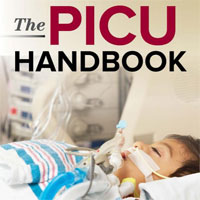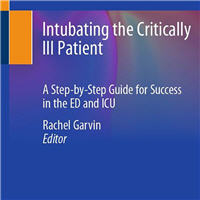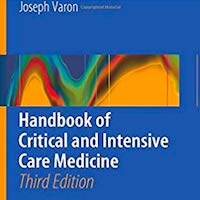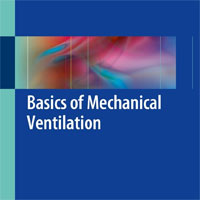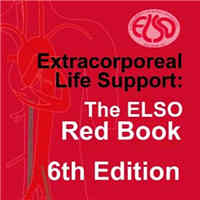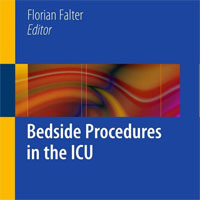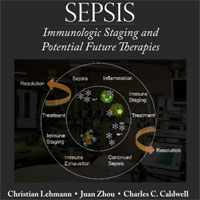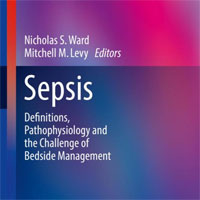Tag: pneumonia
Endotracheal Tube Cuff Pressure Monitoring and VAP Occurrence
This study demonstrated that maintaining endotracheal tube cuff pressure at 30 cm H2O through monitoring every 8 h did not result in a greater incidence of under-inflation (pressures ... read more
Serum MANF vs. Severity and Prognosis in Community-acquired Pneumonia Patients
This evidence demonstrated that serum mesencephalic astrocyte-derived neurotrophic factor (MANF) is positively associated with scoring criteria and poor prognosis in community-acquired pneumonia (CAP) patients. Serum... read more
Tocilizumab vs. IVIG in Patients with Severe COVID-19 Pneumonia
Severe COVID-19 patients who received IVIG in the early phase of the disease did not show better clinical outcomes in terms of mortality, hospitalization time and intensive care unit admission compared to those who received... read more
Holy Water Not so Holy: Potential Source of Elizabethkingia Pneumonia and Bacteremia in an Immunocompromised Host
This case report highlights that E. anophelis may indeed cause significant infection and should not be considered a contaminant especially in immunosuppressed individuals. The organism originates from water sources and may... read more
Ventilator-associated Pneumonia Pathogenesis: Old and New Mechanisms
Ventilator-associated pneumonia (VAP), defined as a lung infection that occurs in patients after 48 hours on mechanical ventilation, is among the most frequently found nosocomial infections in intensive care units around... read more
Clinical Characteristics and Survival Outcomes of Invasive Pulmonary Aspergillosis Patients
Invasive pulmonary aspergillosis (IPA) is a severe infectious disease caused by Aspergillus spp. It is associated with high mortality, particularly in immunocompromised patients, as well as in those with COVID-19 pneumonia... read more
Severe Adenoviral Infections: Disease Progression and Poor Prognostic Markers
Low hemoglobin, high serum ferritin, and high LDH in the second week are markers of disease progression and poor prognostic markers in severe adenoviral infections, emphasizing further research and targeted interventions. The... read more
Increased Sodium Levels Associated with Ceftriaxone Administration
Serum sodium elevation is considered a frequent manifestation in critically ill patients, with significant clinical outcomes and requiring timely management. This case report suggests a possible association between the... read more
TyG Index And Short-term Mortality in Patients with Cardiogenic Shock
The triglyceride-glucose (TyG) index is significantly associated with short-term mortality in patients with cardiogenic shock (CS) and may serve as a useful biomarker for risk stratification. This retrospective cohort... read more
Promising Prognostic Predictors in Sepsis Patients Using Lactate and Albumin Ratio
Serum Lactate/Albumin ratio and BAR ratio were significantly higher in sepsis and/or septic shock and associated with increased length of hospital stay and increased in-hospital mortality and poor clinical outcome inside... read more
Successful Clearance of Persistent Staphylococcus Aureus Pneumonia Using High-dose Continuous Infusion Cefazolin
High-dose cefazolin (10 g daily), given as a continuous infusion (CI), was able to clear community-acquired methicillin-susceptible Staphylococcus aureus (MSSA) pneumonia while not exhibiting any signs of toxicity or adverse... read more
Prophylactic IV Antibiotics Outcomes in Patients with Acute Severe Brain Injury on Mechanical Ventilation
Among critically ill patients with acute brain injury, prophylactic IV antibiotics were associated with less VAP but not with changes in length of stay, mortality, or neurologic outcomes. Patients with structural brain... read more
Extubation in the Operating Room After Elective On-pump CABG Surgery
Although immediate extubation in the operating room following on-pump coronary artery bypass graft (CABG) surgery did not show significant differences in ICU or hospital length of stay (LOS), mortality, or ICU readmission... read more
Cytomegalovirus Infection Adverse Impact on ICU Outcomes in COVID-19 Patients
In critically ill patients with SARS-CoV-2 pneumonia, cytomegalovirus (CMV) infection was frequently observed, and associated with increased ICU and hospital mortality. CMV co-infection correlated with a higher incidence... read more
PCR and Biomarker Algorithms to Guide Antibiotics in Lower Respiratory Tract Infections
Acute chest syndrome (ACS) in sickle cell disease (SCD) is life-threatening and characterised by a new infiltrate on imaging plus fever or respiratory symptoms.1 Causes of ACS include infections, venous or fat embolisms or... read more
Severe COVID-19 Early Identification and the Need for ICU Care Based on Objective Risk Factors
The study found that several factors, including advanced age; male gender; and comorbid conditions like diabetes, chronic lung disease, and CVD had a strong association with ICU admission among COVID-19 patients. Similarly,... read more
COVID-19 Omicron: Immunocompromised vs. Non-immunocompromised Patients
Immunocompromised patients admitted to the ICU due to COVID-19 during the omicron period had higher mortality than non-immunocompromised patients. Additionally, immunocompromised patients with COVID-19 had higher mortality... read more
Eosinopenia as a Predictor of Clinical Outcomes in CAP Patients
Contrary to previously published data, our analysis did not demonstrate an association between eosinopenia and increased mortality risk in hospitalized patients with community-acquired pneumonia (CAP), highlighting the complexity... read more
Oral Health Care and VAP in ICU Patients
Both Zataria Multiflora (ZM) and Chlorhexidine (CHG) and CHG alone reduce ventilator-associated pneumonia (VAP) incidence and improve the oral health status of mechanically ventilated patients. However, the combination of... read more
Alcohol Consumption Association with the Risk of Bacterial Infection and Pneumonia
Alcohol consumption has a nonlinear J-shaped dose–response association with the risk of acquiring and dying due to bacterial infection and pneumonia, where moderate consumption between one-half and four UK units per day... read more
Mortality Predictor with sPAP in Elderly Critically Ill with Severe COVID-19 Pneumonia
Mortality in general ARDS patients remains high, with many experiencing long-lasting sequelae. Numerous studies have been conducted to identify predictors of mortality in COVID-19 patients, particularly regarding right ventricular... read more
Antibiotic Prophylaxis Effectiveness in Polytrauma Patients
The results indicate that antibiotic prophylaxis has no significant effect on mortality and clinical status compared with placebo or standard care in adult polytrauma patients but may reduce the risk of VAP. However,... read more


